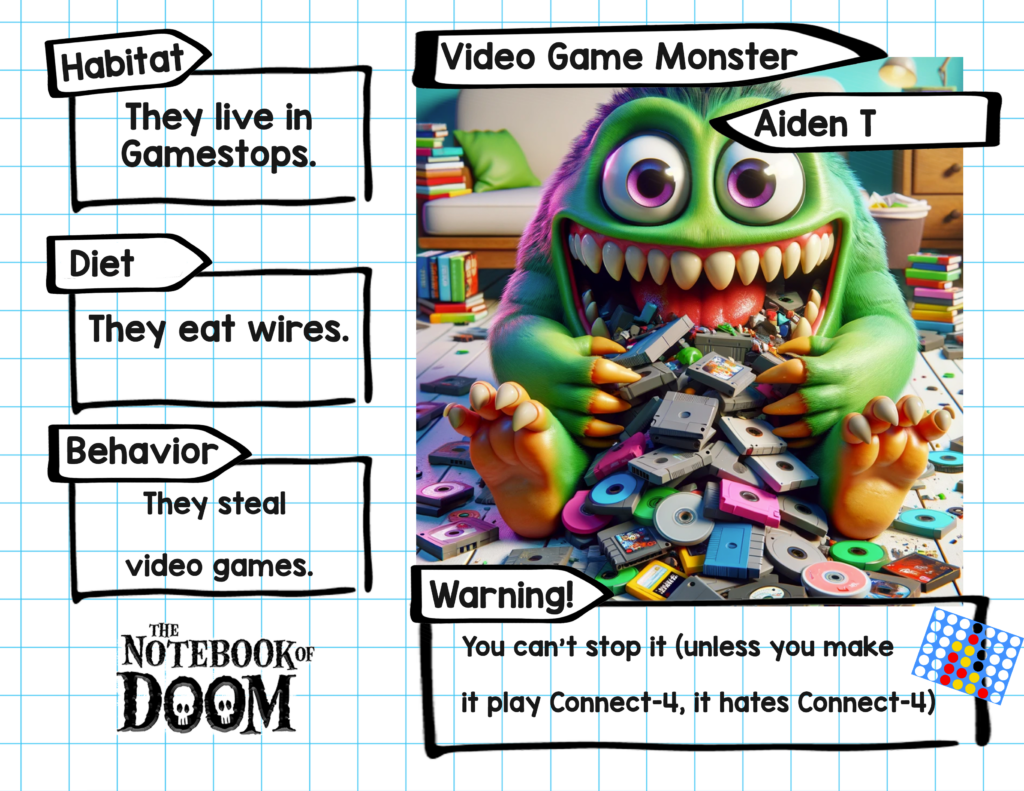
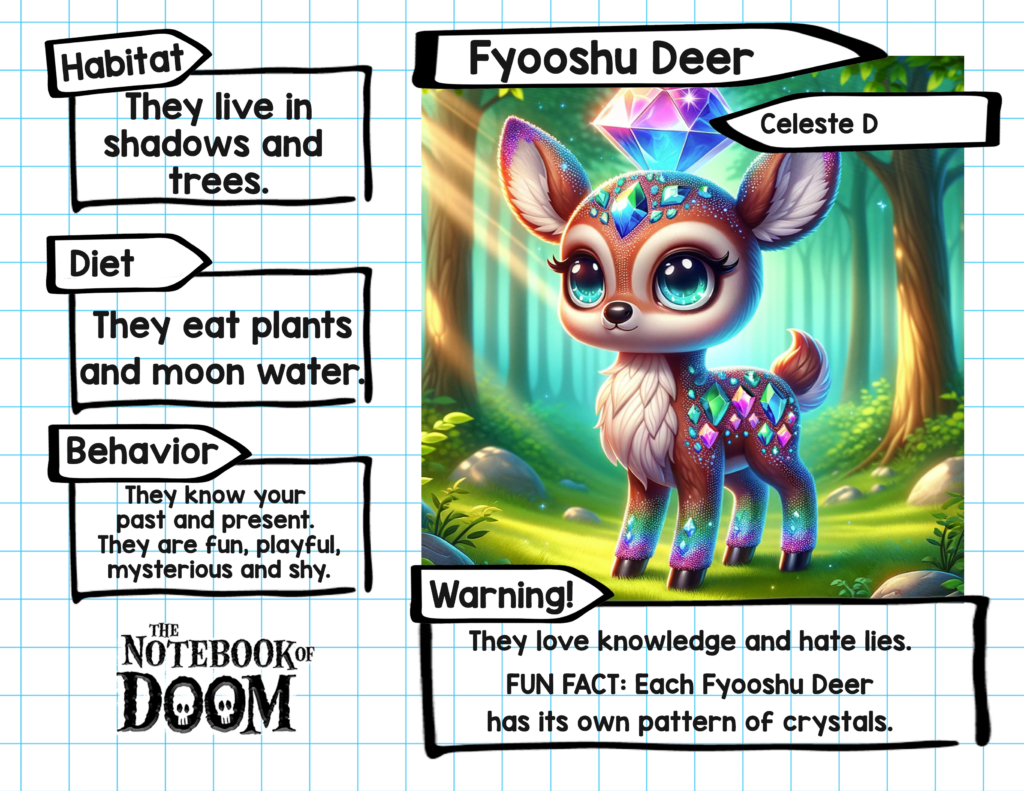
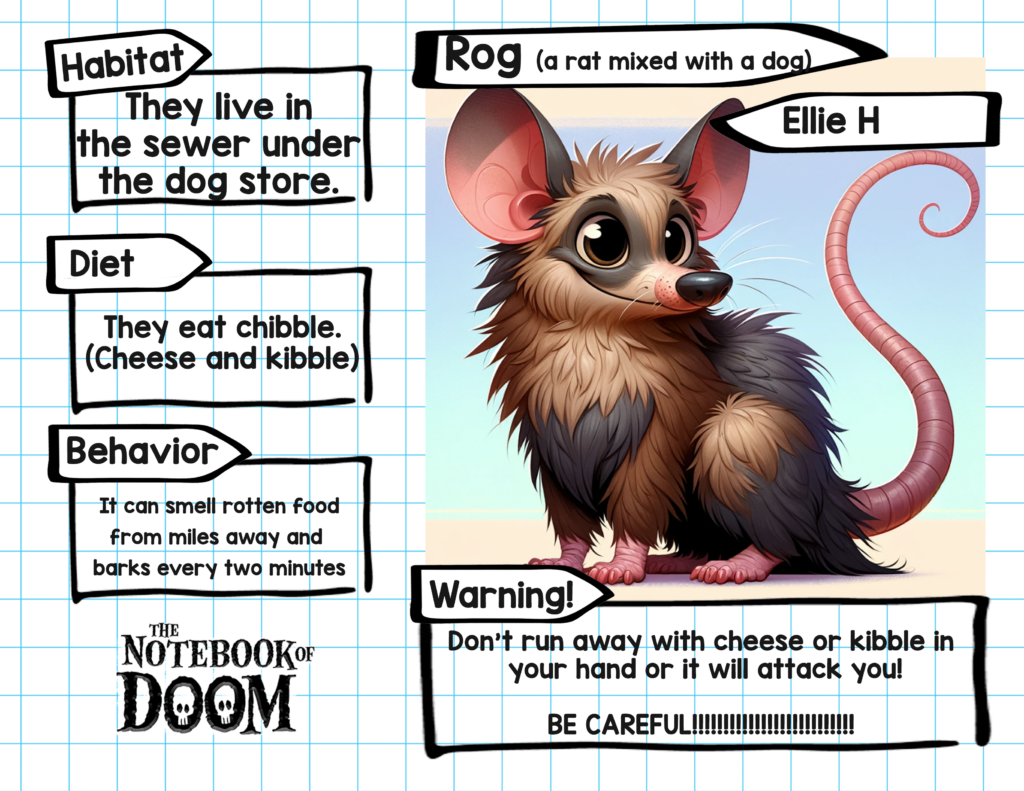
Since the release of Chat GPT in November 2022, educators have been learning along with the rest of the world about the potential benefits and drawbacks of generative artificial intelligence (AI). In June 2023, Head of School Dr. Scott Gaynor spoke to Gaynor graduates about the rise of technology in education, particularly access to artificial intelligence (AI), and how he sees this as an additional tool for Gaynor students. He said, “When used appropriately, it can remove some of the barriers that can hold back a student with learning differences. Just like a calculator or spell check is a tool we regularly use today, AI technology can allow our students to focus on the essential question of an assignment and use their critical thinking to show off their true potential.”
Yellow Cluster Head Teacher Orik Reiback recently completed a project with his reading group that used AI tools to unlock students’ creativity and enhance their written language skills. The reading group had read The Notebook of Doom, which is about a so-called “S.S.M.P. (Super Secret Monster Patrol)” that discovers and protects against all sorts of monsters. The Notebook of Doom lists all known monsters and provides information about them: what their habitat is, what their diet is, any warnings associated with them, and any special abilities that they have.
The book contains blank pages in the back to record any newly discovered monsters, and Mr. Reiback used that as his inspiration for this project. Mr. Reiback explained, “For our project, after we finished the book, we were basically acting as if we were filling up pages in the back of the book. All of the students in my reading group got to make up a monster, and I was having them draw pictures of their monsters. And as you would imagine, their artistic ability varies quite a bit. I had the idea of generating some AI images of their creatures.”
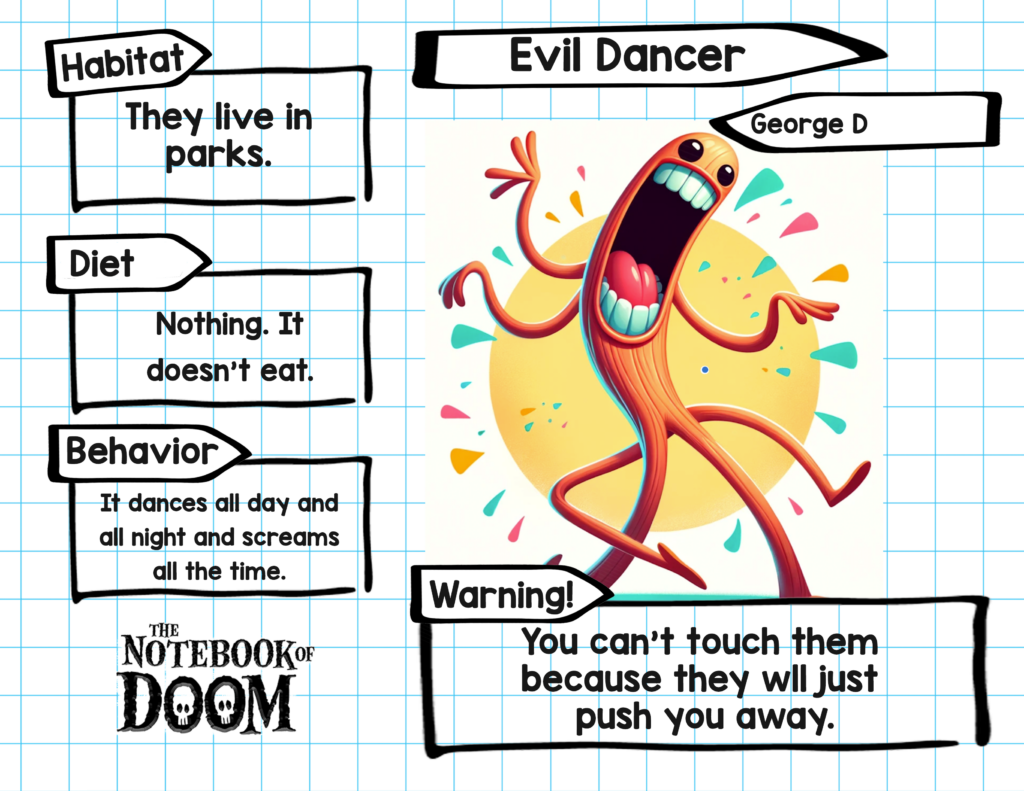
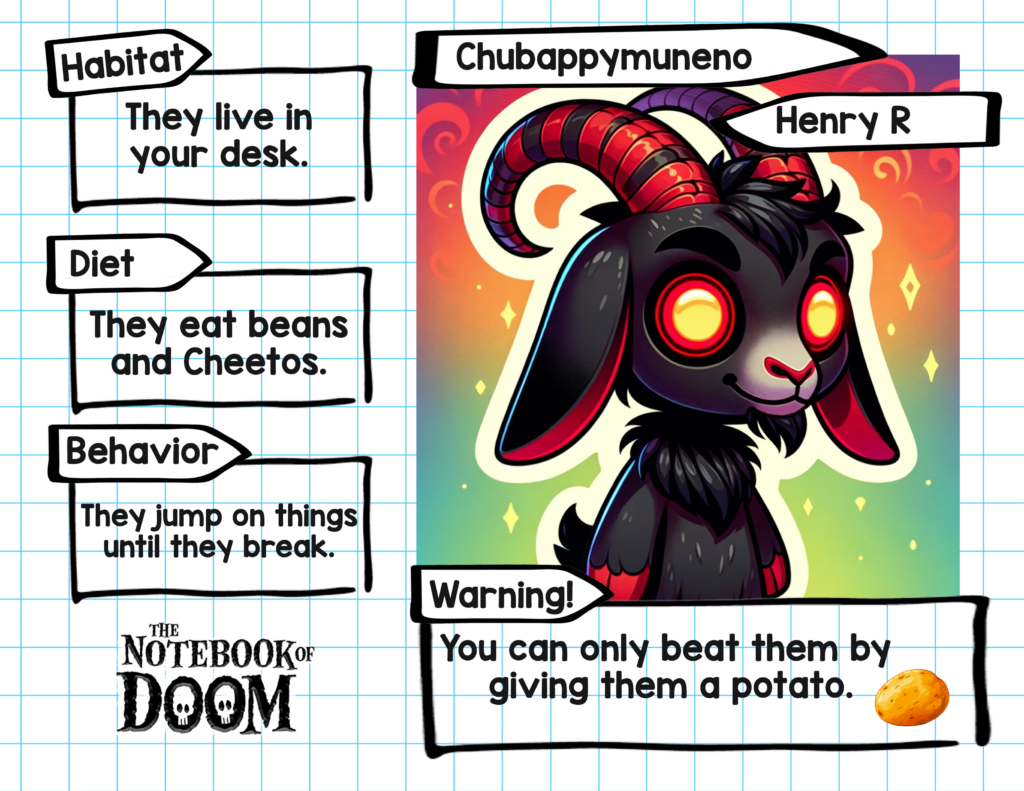
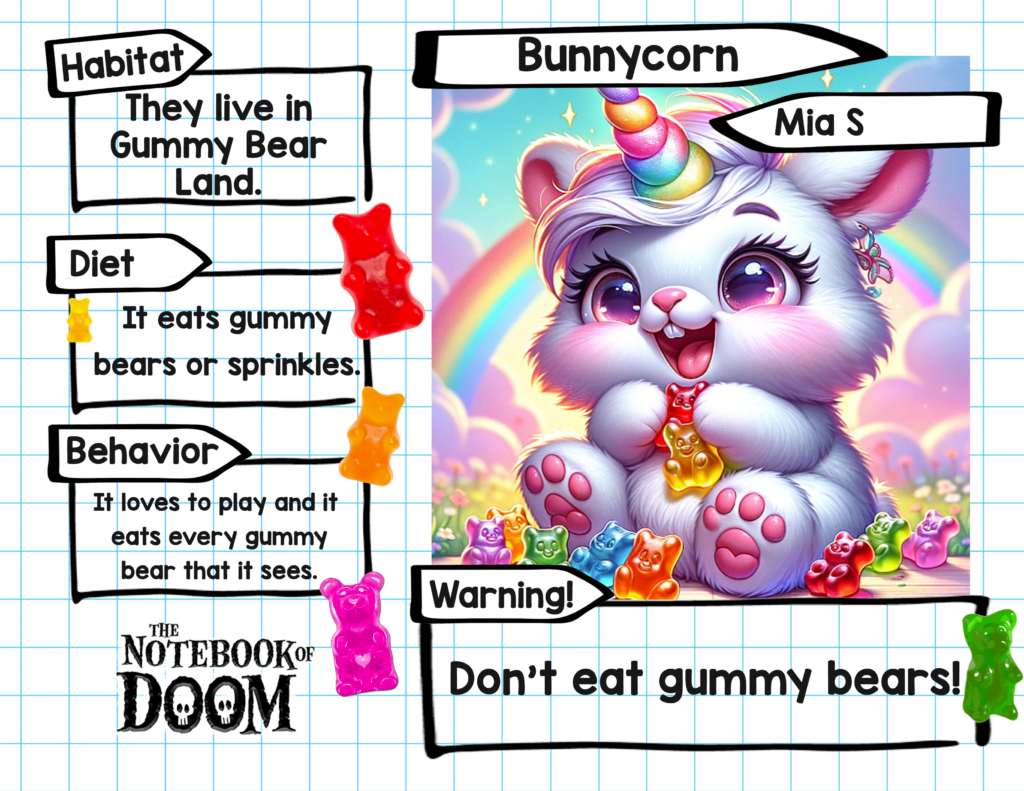
The group used DALL-E, which is an image-generation program on OpenAI that uses Chat GPT to translate language-based prompts into images. Chat GPT is a generative AI model known as a large language model (LLM). Generative AI is a term for any AI system with the primary function of generating content. LLMs work specifically with language and are characterized by having been “trained on” or “fed” vast amounts of language content in order to better predict responses to prompts.
The nature of how these AI models respond to language-based prompts meant that Mr. Reiback could use the results to help students understand, synthesize, and visualize what they were reading. He said, “I was thinking that, wow, that is actually such a cool thing for them to see because I’ve been working with them on really visualizing what they’re reading and making a movie in their head. This tool gives such a visual, concrete way to see how their words translate into an image, something they can really viscerally understand.”
He explained, “I would call students up one by one and we would work together and they would describe their creature to me. I would type it in exactly as they would tell it to me, and we would see what it would come up with, and for a few of them it was really spot on. But for most of them it wasn’t really exactly what they were looking for, so they had to change their language. And we had to make multiple attempts and they got to see how using different language prompts would result [in different images].”
Generative AI certainly has the potential to become a powerful tool in the toolkit for students with language-based learning differences, but it does have potential drawbacks. Aside from the obvious issues of plagiarism and an overdependence on technology, AI can be biased and it can also create fictional or inaccurate results (known as hallucinations). Any data or information entered into an AI platform becomes part of the data set that the AI learns from and can present to other users, so it is important never to enter private or proprietary information into a generative AI platform.
While AI can offer numerous benefits in the classroom, especially for students with language-based learning differences, it should be used as a complement to, not a replacement for, the expertise and guidance of teachers.
Mr. Reiback is acutely aware of the potential negative aspects of AI, but also feels that AI tools are going to be a part of students’ lives going forward, and he wants them to learn appropriate ways to use AI tools. He said, “I have been looking for ways to integrate this super powerful tool into my classroom more because I feel like we have this amazing new thing that’s available to us and we should be looking for ways to use it. And for a school like ours where kids mostly have language-based learning differences, [LLMs are] totally based on language. It seems almost magical the way it works, but it’s all about language, and for these language-impaired children to have, all of a sudden introduced to the world, this tool that is literally a language model, it seems like such a perfect fit.”
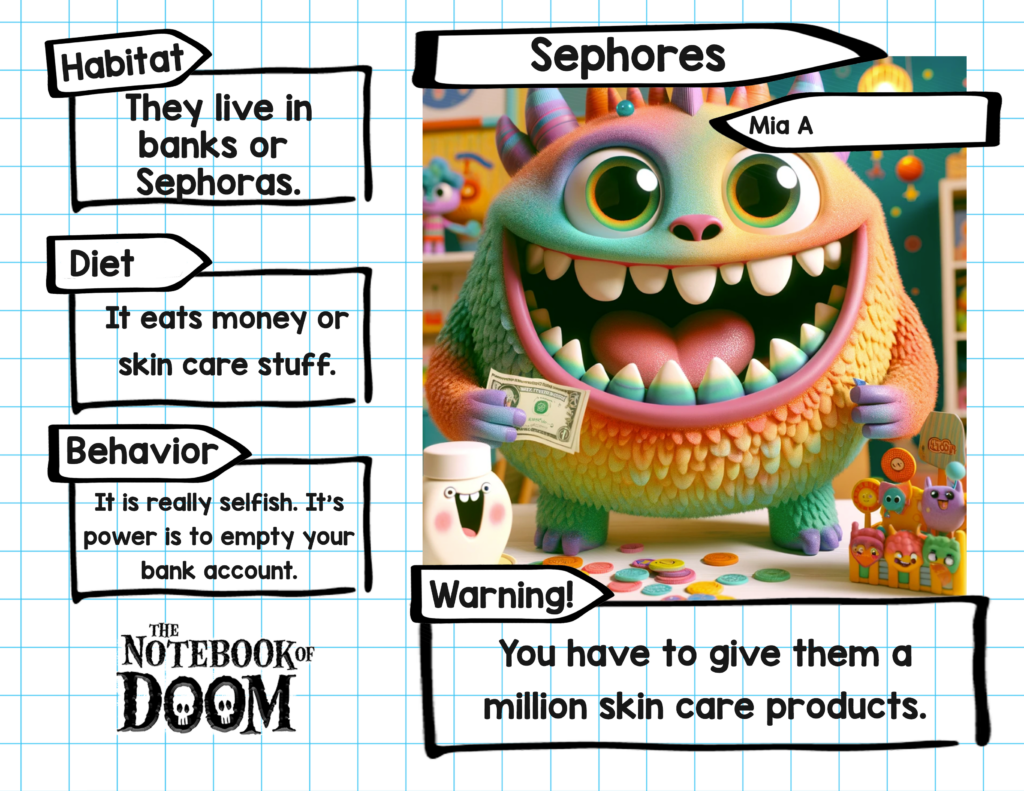
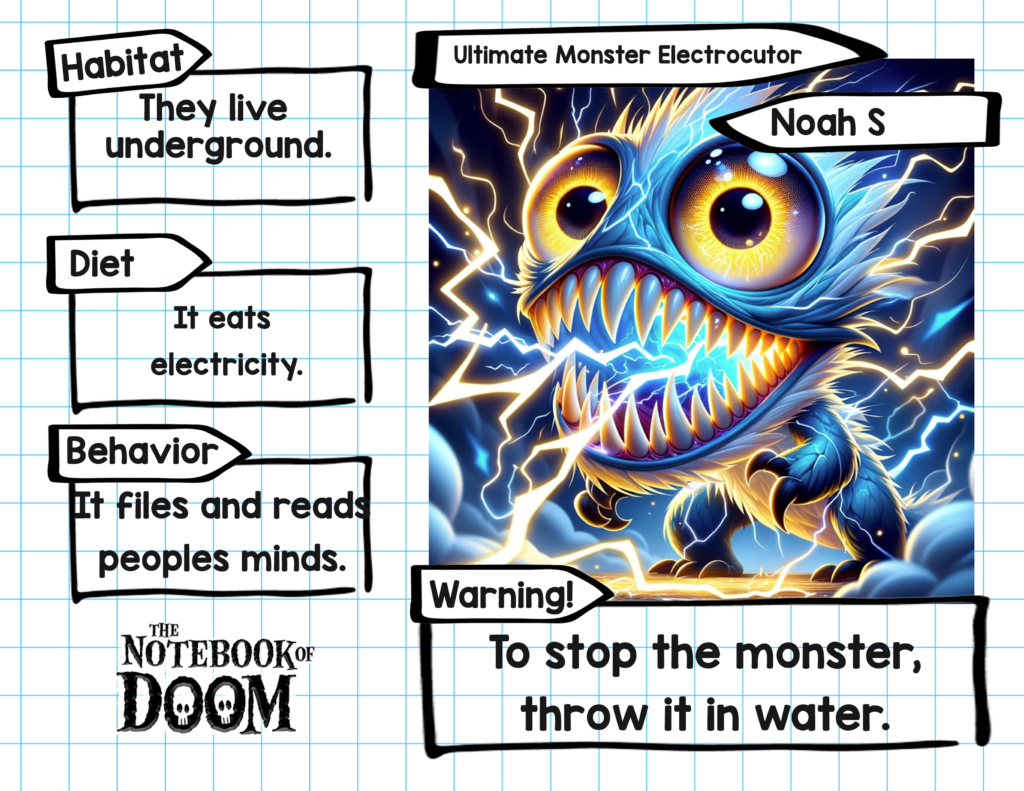
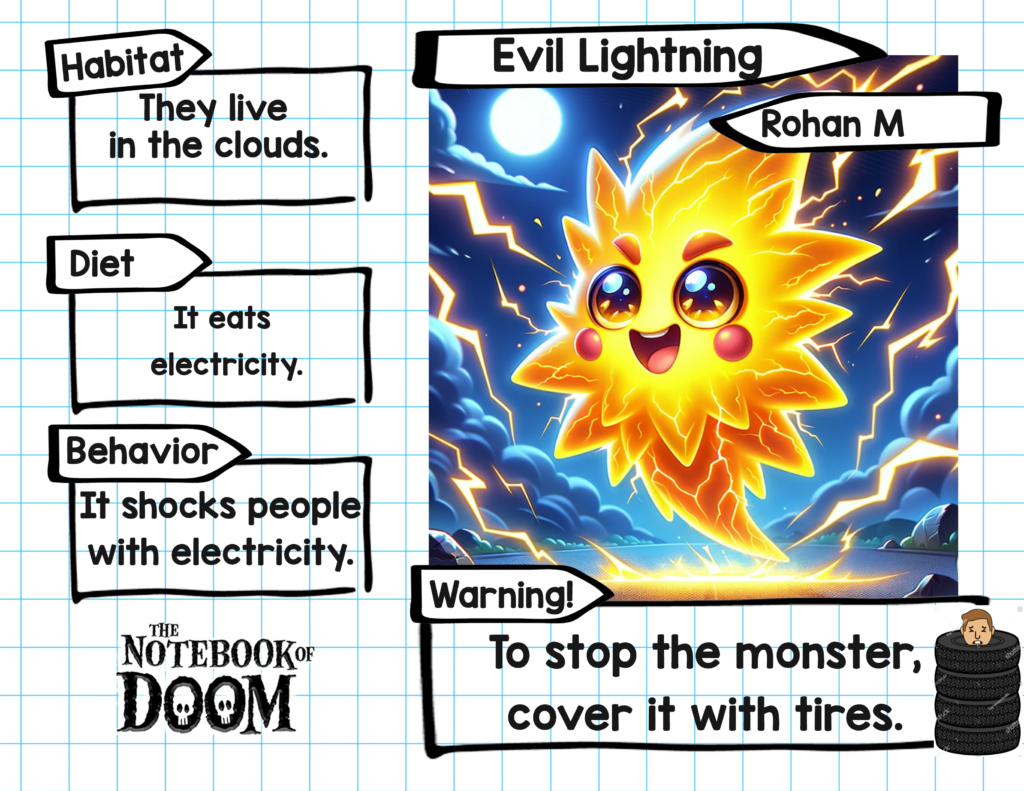
He continued, “There’s obviously tremendous potential for it to be misused. There are a lot of things it doesn’t do so well. But we’re in very early days of this technology and it’s already improving by leaps and bounds. And I feel like it’s going to continue on this trajectory. It’s going to be a part of [our students’] lives, and this technology is not just going to go away. Just like when the calculator was invented, nobody wanted any kid to use a calculator. But it’s a tool. There’s a time and a place for a calculator. You definitely don’t want it at certain times where they’re learning foundational skills and trying to build fluency, but later on it can be very appropriate to use a calculator. We use Grammarly all the time at Gaynor and that’s a tool that we have integrated into our workflow. And I feel like this is such a vast innovation that it is going to be as transformative to society as the invention of the Internet was. And in the same way, people were kind of scared of the Internet at first.”
Educators in general are coming to terms with the power, potential, and possible pitfalls of generative AI as a tool in the classroom. Mr. Reiback’s project is just one example of how AI can enhance creativity and language skills by translating students’ descriptions into visual representations. While acknowledging the possible negative aspects of AI, such as bias and inaccuracy, the technology can be a valuable addition to the classroom toolkit as long as AI is used responsibly integrated into the curriculum, and paired with traditional teaching methods.
